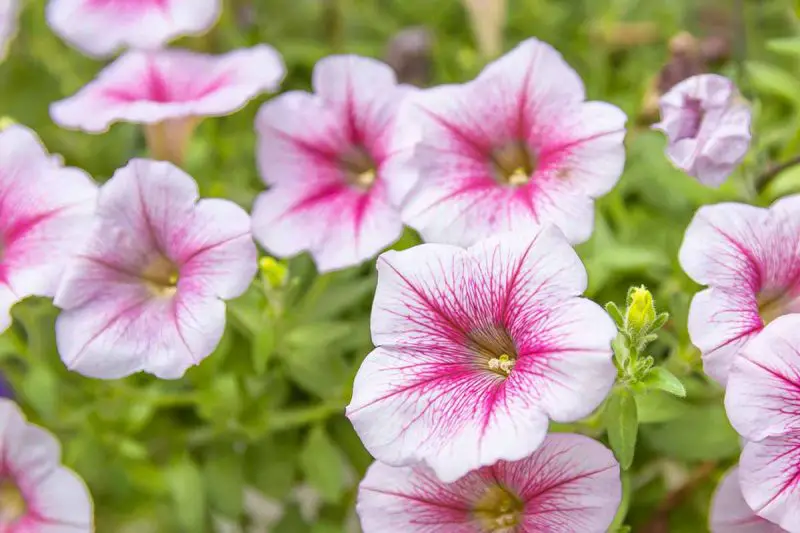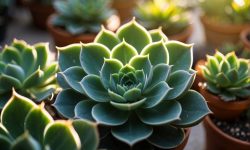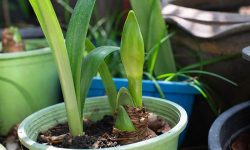Few flowers can rival the charm and color versatility of petunias. With their vibrant hues, delicate shapes, and cascading growth, these blooms can transform any garden, balcony, or hanging basket into a stunning display. Whether you are a beginner or an experienced gardener, learning to grow petunias like a professional ensures months of continuous blossoms and healthy foliage. These hardy, sun-loving annuals are not just beautiful—they are also adaptable and forgiving, making them one of the most rewarding plants to cultivate.
However, achieving lush, long-lasting petunia displays requires more than simply planting and watering. Understanding the right conditions—light, soil, water, and pruning—is key to maximizing their potential. Petunias thrive when given proper care and attention throughout the growing season. In this detailed guide, you’ll discover expert techniques for planting, nurturing, and maintaining petunias to create dazzling floral arrangements that bloom from early spring until the first frost. With the right knowledge and consistent care, you can turn your garden into a vibrant sea of color that stays fresh and radiant all season long.
Understanding Petunias: Growth Habits and Varieties

To grow petunias successfully, it’s essential to understand their growth habits and the differences among their many varieties. Petunias belong to the Solanaceae family, the same group as tomatoes and peppers, and are native to South America. They are warm-season annuals that thrive in full sunlight and well-drained soil. Petunias typically grow quickly, producing abundant blooms that can last for months with proper care. Their growth habits vary by type, ranging from compact mounds to trailing vines that spill beautifully over containers or garden edges. Recognizing these habits helps you choose the right petunias for your space and gardening goals.
There are four main types of petunias—grandiflora, multiflora, milliflora, and spreading (also known as wave petunias). Grandiflora petunias produce large, showy blooms up to five inches wide, making them perfect for focal points in garden beds or decorative pots. However, they are more sensitive to rain and wind. Multiflora petunias have smaller, sturdier flowers that can handle harsher weather, making them ideal for outdoor landscapes. Milliflora varieties offer miniature blooms that create a carpet of color, while spreading petunias form long, cascading stems that are perfect for hanging baskets or borders. Each variety offers distinct advantages depending on your design preferences.
Understanding the growth behavior of each type allows you to plan more effectively. For instance, trailing petunias excel in containers, while compact ones work best as mass plantings in garden beds. Knowing their differences also helps determine watering frequency, spacing, and pruning needs. Once you match the right variety to the right location, you set the stage for a flourishing display of continuous color that endures all season long.
Choosing the Right Location for Petunias
Choosing the right location is one of the most important steps in growing petunias that thrive all season long. These flowers are sun-loving annuals that perform best in bright, open spaces. To reach their full potential, petunias need at least six hours of direct sunlight daily. The more sun they receive, the more flowers they produce. Morning sunlight is particularly beneficial because it dries dew from the leaves and prevents fungal diseases from developing. In areas with very hot afternoons, some light shade can help protect the blooms from scorching, but too much shade results in fewer flowers and leggy, weak stems. Full sun exposure remains the key to abundant, vibrant blooms.
Air circulation is another factor to consider when choosing where to plant petunias. These plants prefer moderate airflow that keeps their leaves dry and reduces the risk of mildew. Avoid locations that are too crowded or shielded by tall plants, fences, or walls, as this can trap moisture and restrict light. Petunias do well in garden beds, containers, and hanging baskets, as long as they are placed where the wind can gently move through without damaging the delicate blossoms. Good air movement promotes healthier foliage, stronger stems, and continuous flowering throughout the growing season.
Soil condition plays an equally crucial role in petunia health. They grow best in fertile, well-draining soil that remains slightly moist but never waterlogged. If your garden has heavy clay soil, improve drainage by mixing in compost, peat moss, or perlite before planting. For container-grown petunias, use a high-quality potting mix designed for flowering annuals. Proper soil preparation and sunlight exposure work together to create the ideal environment for lush, colorful petunias that flourish from early spring to the first frost.
Preparing the Soil for Planting Petunias
Healthy soil is the foundation of vibrant, long-lasting petunia displays. These flowers thrive in nutrient-rich, well-drained soil that encourages strong root development and continuous blooming. Before planting, loosen the soil to a depth of at least twelve inches to allow roots to spread easily. Petunias prefer slightly acidic to neutral soil with a pH between 6.0 and 7.0. If the soil is too compact or clay-heavy, mix in organic matter such as compost, aged manure, or peat moss to improve texture and drainage. This preparation ensures that water flows freely without pooling, which prevents root rot and keeps the plants healthy throughout the growing season.
In garden beds, add a slow-release fertilizer or a balanced 10-10-10 formula to enrich the soil before planting. This provides an even supply of nutrients that supports early growth and strong flower production. For container plantings, choose a high-quality potting mix designed for flowering plants, as these mixes are lightweight and retain moisture effectively. Avoid using garden soil in pots, as it tends to compact and restrict root growth. When preparing large areas, it’s best to work in fertilizer and organic matter several days before planting to give nutrients time to blend evenly into the soil.
Moisture control is also essential when preparing soil for petunias. These plants need soil that stays consistently moist but never soggy. Overly wet conditions can suffocate the roots, while overly dry soil can lead to drooping and faded blooms. Mulching lightly around the base of petunias helps regulate moisture, reduce weeds, and protect the roots from extreme temperatures. Proper soil preparation provides the perfect balance of air, water, and nutrients—ensuring your petunias grow lush, colorful, and full of life all season long.
Planting Petunias the Right Way
Planting petunias correctly from the start sets the foundation for a healthy, continuous bloom cycle. The best time to plant them is in late spring, once the threat of frost has completely passed and the soil has warmed. Begin by arranging your petunias in their desired locations while still in their containers to visualize spacing and coverage. Petunias should be spaced about twelve inches apart to allow air circulation and room for spreading. This spacing prevents overcrowding, which can lead to weak stems and fungal problems later in the season. When planting, dig holes just deep enough to accommodate the root ball, ensuring that the base of the plant sits level with or slightly above the surrounding soil.
For garden beds, water the area before planting to help the roots settle easily into the moist soil. Gently remove each petunia from its container, taking care not to damage the delicate roots. Loosen the root ball slightly if it appears compacted, then place it in the hole and firm the soil gently around it. Water thoroughly after planting to eliminate air pockets and help the roots establish contact with the soil. If you’re planting trailing varieties in hanging baskets or containers, use a potting mix that retains moisture but drains well to prevent waterlogging. Hanging varieties benefit from consistent hydration due to faster evaporation.
After planting, add a light layer of mulch or organic matter around the base to help retain moisture and regulate soil temperature. Avoid piling mulch directly against the stems, as this can cause rot. Within a few weeks, the plants will begin to establish strong roots and produce vigorous new growth. Proper planting not only ensures stability but also encourages lush blooms that last from early summer through the first frost, turning your garden or patio into a radiant display of color.
Watering and Feeding Petunias for Optimal Growth
Watering Petunias the Right Way
Proper watering is one of the most important aspects of growing petunias successfully. These plants prefer evenly moist soil but can quickly suffer if conditions are too dry or too wet. The key is balance. Water deeply and thoroughly to encourage roots to grow downward, but allow the top inch of soil to dry between waterings. Shallow watering leads to weak, shallow roots and fewer flowers. In garden beds, watering two to three times a week during hot weather is often enough, while container-grown petunias may need daily watering since pots dry out faster. Always water at the base of the plant rather than overhead to keep the leaves dry and prevent fungal diseases. Morning watering is ideal because it gives the plants time to dry before evening, reducing the risk of mildew.
Inconsistent watering can stress petunias, leading to wilting, leaf yellowing, and reduced bloom production. On the other hand, overwatering causes root rot, a common issue in heavy or poorly drained soil. To maintain consistent moisture levels, consider adding a thin mulch layer around the plants to conserve water and reduce evaporation. Self-watering pots or drip irrigation systems can also help regulate soil moisture for those growing petunias in containers or hanging baskets. Keeping a steady watering schedule and monitoring soil conditions regularly will result in healthy, robust petunias that stay vibrant all season long.
Feeding Petunias for Continuous Blooms
Fertilization is equally important to keep petunias blooming profusely throughout the growing season. These plants are heavy feeders that require a steady supply of nutrients to produce large, colorful flowers. Start by mixing a slow-release fertilizer into the soil at planting time to give the plants a strong start. As the season progresses, supplement with a water-soluble fertilizer every two to three weeks to maintain steady nutrient levels. A balanced 10-10-10 or 20-10-20 formula works best, as it provides essential nitrogen for growth, phosphorus for flowering, and potassium for root strength.
Avoid using too much nitrogen, as it encourages lush foliage at the expense of blooms. For container-grown petunias, frequent feeding is especially important because nutrients wash out faster with each watering. Always fertilize after watering to prevent burning the roots. During peak bloom periods, a bloom-boosting fertilizer high in phosphorus helps intensify flower color and longevity. By maintaining a regular feeding routine, your petunias will stay vigorous and produce a constant wave of blossoms from early summer to the first frost. Consistent nourishment ensures lush, cascading growth and stunning, long-lasting floral displays that truly make your garden stand out.
Pruning and Deadheading for Continuous Flowering
The Importance of Deadheading Petunias
Deadheading, or removing faded blooms, is one of the simplest yet most effective ways to keep petunias blooming continuously. When old flowers are left on the plant, petunias shift their energy toward producing seeds instead of new blossoms. This slows growth and reduces the number of blooms over time. By removing spent flowers regularly, you encourage the plant to focus on producing more buds and stronger stems. Deadheading also improves air circulation and prevents mold or fungus from developing on decaying petals, which is especially helpful in humid conditions.
To deadhead properly, pinch or snip off the entire flower stem just above the nearest set of healthy leaves. Avoid leaving a small portion of the stem, as it can turn brown and attract pests. For larger gardens, you can use small pruning shears to speed up the process. Make it a habit to deadhead your petunias every few days, especially during peak blooming season. Regular deadheading keeps your plants neat, vibrant, and full of color, transforming them into nonstop bloomers that stay attractive all season long.
Pruning Petunias for Fuller Growth
In addition to deadheading, pruning petunias helps maintain shape, prevents legginess, and stimulates bushier growth. Over time, petunias can develop long, spindly stems that produce fewer flowers at the ends. Trimming them back encourages the plant to grow side shoots, which results in denser foliage and more blooms. The best time to prune is mid-season, around midsummer, when plants start looking tired or overgrown. Use clean scissors or pruning shears to cut back each stem by about one-third of its length.
After pruning, water the plants well and apply a balanced fertilizer to support recovery and new growth. Within a week or two, you’ll notice fresh, compact shoots forming, followed by a new flush of flowers. This rejuvenation extends the blooming period, ensuring your petunias remain lush and colorful well into fall. Pruning may seem like a small step, but it’s the secret to professional-looking displays that stay healthy, balanced, and full of life throughout the growing season.
Propagating Petunias to Expand Your Garden
Propagating petunias is a rewarding and cost-effective way to fill your garden with vibrant, colorful blooms. These plants can be propagated either from seeds or cuttings, depending on your preference and available resources. Growing petunias from seeds allows you to experiment with new colors and hybrids, while stem cuttings ensure that the new plants are identical to the parent. Seed propagation should begin indoors about ten to twelve weeks before the last frost. The tiny seeds require light to germinate, so press them gently into the soil without covering them. Keep the soil consistently moist and warm, ideally between 70°F and 75°F. Once seedlings develop several true leaves, they can be transplanted outdoors after hardening off.
Cuttings are a faster and more reliable method for reproducing petunias, especially for hybrids. Choose a healthy stem about four inches long from a mature plant and remove the lower leaves, leaving only the top pair. Dip the cut end into rooting hormone to encourage faster root growth, then plant it in a small pot with moist, well-draining soil. Covering the cutting with a clear plastic bag helps maintain humidity while the roots establish. Within two to three weeks, the cutting should develop strong roots and be ready for transplanting into the garden or containers.
Once propagated, young petunias need gentle care to thrive. Gradually expose them to sunlight and outdoor conditions before transplanting. Space them properly to prevent overcrowding, and water consistently but lightly to encourage deep root formation. Fertilize lightly once new growth appears to strengthen the plants. Whether started from seeds or cuttings, propagated petunias adapt quickly and begin blooming in just a few months. With this method, gardeners can multiply their favorite varieties and create a continuous, colorful display that enhances the beauty of their garden every season.
Post-Bloom Care for Petunias to Encourage Regrowth
Reviving Petunias After Flowering
When petunias finish their first major bloom cycle, they often appear tired or leggy. This is completely normal and provides the perfect opportunity to revive them for continued growth. Begin by trimming back the stems by about one-third of their length to remove faded flowers and promote new branching. This process stimulates the plant to produce fresh shoots and buds, leading to another flush of blooms within a few weeks. Be sure to water the plants deeply after pruning to help them recover from stress. Adding a light dose of balanced fertilizer at this stage replenishes nutrients that were used up during flowering, restoring strength and vigor to the plant.
In hot climates, petunias may slow down during midsummer. If this happens, move container-grown plants to a slightly shadier spot for a week to let them recover. For garden petunias, keeping the soil evenly moist and mulched can prevent heat stress. Removing all dead flowers, yellowing leaves, and weak stems improves air circulation and reduces the risk of disease. Within a short time, the plants will start producing lush foliage again, preparing for a renewed burst of blooms that carry through to the end of the season.
Maintaining Strong Growth After Revival
Once your petunias begin regrowing, consistent care ensures they stay healthy and full of color. Feed them every two weeks with a water-soluble fertilizer high in phosphorus to promote flowering. Check the soil regularly—petunias dislike soggy conditions but need steady moisture to thrive. Deep watering encourages strong root systems that support continuous blooms. Avoid light, frequent watering, as it can weaken the plants and reduce flower production.
Pruning lightly during the regrowth phase keeps the shape compact and prevents legginess. For hanging baskets or container petunias, rotate the pots weekly so that all sides receive even sunlight. This promotes uniform growth and prevents one side from becoming sparse. Continue deadheading any faded blooms to keep energy focused on new flower formation. With consistent watering, feeding, and pruning, revived petunias can bloom beautifully again, providing an impressive, long-lasting display until the first frost of the season.
Overwintering Petunias for Next Year’s Blooms
Although petunias are typically grown as annuals, they can be overwintered successfully with the right care, allowing you to enjoy their beauty year after year. The process begins in late fall, before the first frost arrives. Start by carefully digging up healthy petunia plants from the garden, making sure to preserve as much of the root system as possible. Shake off excess soil and trim the stems back to about four inches. This helps reduce water loss and allows the plant to focus its energy on survival. For container-grown petunias, simply move the pots indoors instead of replanting. Before bringing them inside, inspect each plant for pests or disease and treat if necessary to prevent problems during winter dormancy.
Once indoors, place the petunias in a bright, sunny location, such as a south-facing window or under a grow light. These plants still require several hours of light daily, even in dormancy. Keep the soil slightly moist but never soggy, as overwatering during winter can cause root rot. If natural light is limited, use fluorescent or LED grow lights to supplement. Indoor temperatures between 55°F and 65°F are ideal for keeping the plants healthy but dormant. Avoid placing them near heaters or drafts, which can dry out the foliage and stress the roots.
For gardeners who prefer a less hands-on approach, petunias can also be overwintered as cuttings. Before frost, take four-inch stem cuttings and root them in small pots indoors, just as you would in propagation. These cuttings will remain small through winter but can be replanted outdoors once spring returns. Whether you overwinter whole plants or rooted cuttings, the reward is worth the effort—a head start on the growing season and lush, early blooms that brighten your garden well before new seedlings are ready to flower.
Common Mistakes to Avoid When Growing Petunias
Overwatering and Poor Drainage
Overwatering is one of the biggest reasons petunias struggle, even for experienced gardeners. These flowers may look delicate, but they are resilient and prefer soil that’s moist yet never soggy. Constantly wet soil suffocates roots by depriving them of oxygen, which weakens the plant and opens the door for diseases like root rot. Symptoms of overwatering include yellowing leaves, soft stems, and stunted growth. In containers or hanging baskets, poor drainage intensifies the problem because water can accumulate at the bottom, drowning the roots. Petunias suffering from overwatering rarely recover unless immediate steps are taken to dry out the soil and improve drainage.
To prevent this issue, always use well-draining soil mixed with compost and coarse materials such as perlite or vermiculite. Water deeply but only when the top inch of soil feels dry to the touch. For potted petunias, ensure there are several drainage holes, and avoid leaving saucers filled with water beneath the pots. During rainy seasons, move containers under shelter to avoid saturation. If your garden soil tends to retain water, consider planting petunias in raised beds. Balanced watering not only strengthens roots but also enhances flower production, ensuring healthier, more colorful blooms all season long.
Neglecting Deadheading and Pruning
Many gardeners underestimate how essential deadheading and pruning are for petunias. Once flowers fade, the plant’s instinct is to produce seeds, which stops new flower development. This shift in energy weakens the plant, reduces the number of blooms, and often leads to dull, sparse foliage. Similarly, without occasional pruning, petunias become leggy with long stems that droop or break easily. This makes the plants look untidy and reduces their visual appeal. Regular trimming and deadheading are the secret to keeping petunias lush, dense, and flowering non-stop throughout the growing season.
To fix this, remove dead or faded flowers at least once a week by pinching them off with your fingers or trimming them with clean scissors. Every few weeks, trim back the entire plant by one-third to encourage branching and fresh growth. After pruning, feed with a liquid fertilizer to stimulate recovery and new flower formation. This routine maintenance helps petunias maintain a compact, rounded shape with strong stems and abundant blooms. Over time, consistent deadheading and pruning will transform your petunias from ordinary plants into vibrant focal points that elevate your entire garden’s beauty.
Planting in Too Much Shade
Planting petunias in areas that lack sunlight is another common mistake that drastically reduces flowering potential. Petunias are sun-hungry plants, and without adequate light, they become leggy and produce fewer, smaller blooms. Shade also creates a damp, humid environment that encourages fungal problems like powdery mildew. In deep shade, petunias may grow tall but weak, with thin stems and dull leaves. Even varieties marketed as “shade-tolerant” still need several hours of sunlight to perform well. When starved of light, their colors fade, and blooming slows to a stop.
To correct this, always plant petunias in locations that receive at least six to eight hours of direct sunlight each day. Morning sunlight is ideal, as it energizes growth and helps dry any dew on the leaves. If you grow petunias in containers or hanging baskets, move them occasionally to track the sun’s path and maximize exposure. In partially shaded gardens, use reflective surfaces or light-colored walls to increase brightness. Adequate sunlight not only improves color intensity but also strengthens stems and boosts resilience against disease. When given the right amount of light, petunias reward you with vibrant, healthy blooms that last from spring to frost.
FAQs About Growing Petunias
How much sunlight do petunias need every day?
Petunias need at least six to eight hours of direct sunlight daily to produce abundant and vibrant blooms. Full sun helps strengthen stems, deepen flower color, and reduce the risk of fungal disease. In extremely hot climates, light afternoon shade can protect the blooms without affecting overall flowering performance.
How often should I water my petunias?
Water petunias deeply whenever the top inch of soil feels dry. In garden beds, this usually means watering two to three times per week, depending on temperature and rainfall. For container petunias, daily watering may be necessary during hot weather since pots dry out faster. Avoid overwatering to prevent root rot.
Why are my petunias becoming leggy and producing fewer flowers?
Leggy petunias are usually caused by lack of pruning, insufficient sunlight, or too much nitrogen fertilizer. Trim back overgrown stems by one-third to encourage bushier growth and more blooms. Also, ensure they receive plenty of sunlight and balanced feeding to maintain compact, lush growth throughout the season.
Can petunias survive the winter?
Petunias are typically grown as annuals, but they can survive winter indoors in mild climates or when overwintered properly. Before the first frost, move container petunias inside or take stem cuttings to propagate new plants. Provide bright light, minimal watering, and moderate temperatures to keep them dormant until spring.
How can I keep my petunias blooming all season long?
To encourage nonstop blooms, deadhead faded flowers regularly, prune back leggy stems, and fertilize every two to three weeks with a phosphorus-rich formula. Maintain consistent watering and full sunlight exposure. Midseason rejuvenation—cutting back plants and feeding them—often triggers fresh, abundant blooms that last until frost.
Conclusion
Growing petunias like a pro is a joyful journey that rewards you with a season-long explosion of color and fragrance. With the right balance of sunlight, water, soil, and pruning, these flowers flourish effortlessly, filling your garden with continuous blooms. Regular care—especially deadheading, feeding, and proper watering—keeps them strong and radiant. Whether cascading from hanging baskets or brightening garden beds, petunias bring life and energy to every corner they touch. By understanding their needs and nurturing them consistently, you’ll enjoy stunning, long-lasting displays that capture the beauty and vibrancy of nature all season long.






